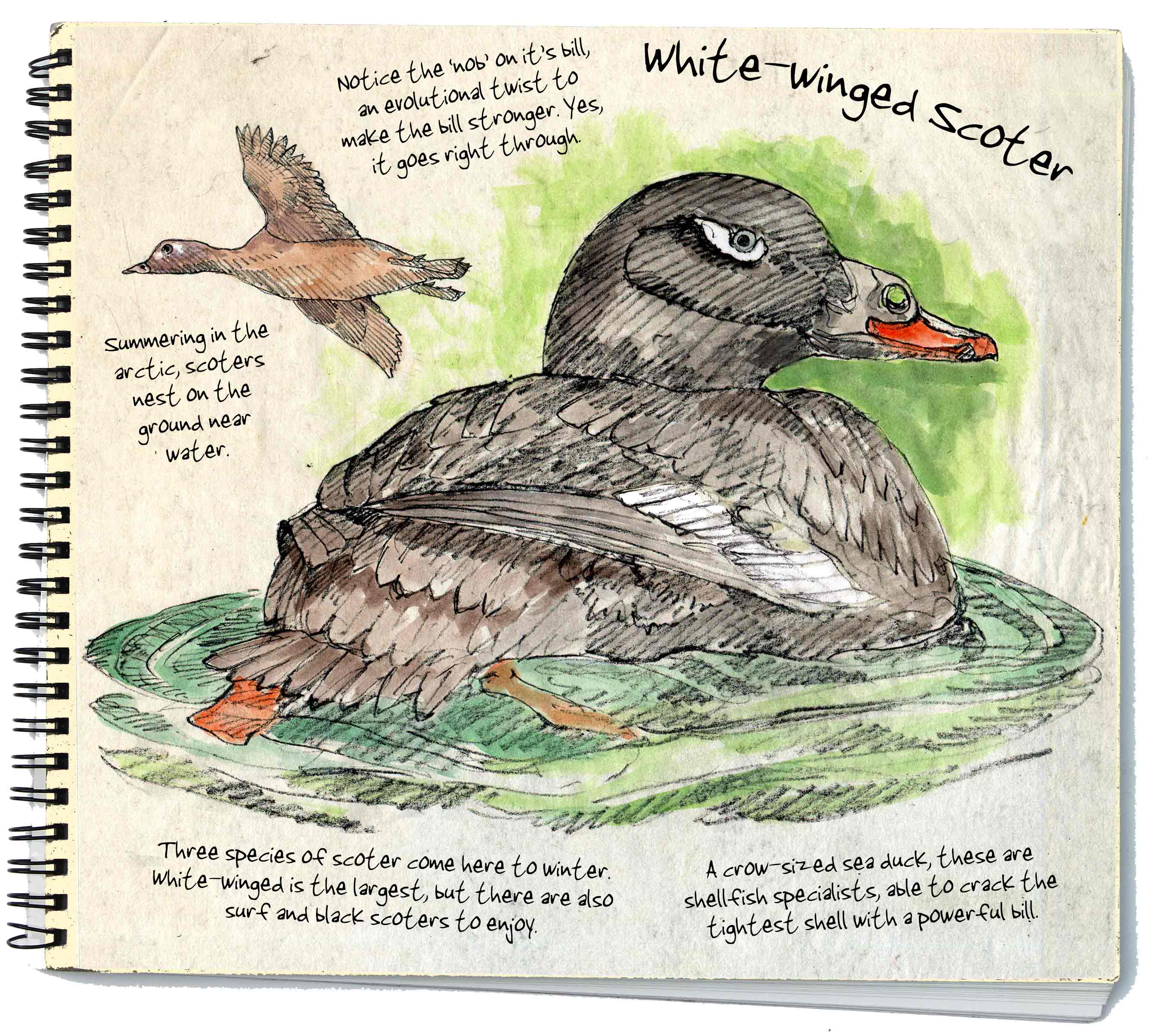With eye swoosh that reminds one of Amy Winehouse, white-winged scoters are large and mostly black sea ducks. The white-winged scoter, pronounced sc‘oh’ter, is the largest of the three that are here during the cold months. The white feathers near the male’s eye and on the wing can be seen from a fair distance and make for good identifying marks. Unlike Amy, females are dull brown. These are winter birds for the Salish Sea, and these birds are here because they’re shellfish-eaters. Scoters dive for clams, mussels, shrimp and snails and seem to favor deeper water than the other two scoter species. They typically dive into shellfish beds, tear off a mouthful and once back on the surface sort it out as to what’s good or not. It honestly doesn’t seem to matter, because their stomach juices can digest just about anything.
White-winged scoters spend their summers in the far north like other sea ducks. They build a feather-lined nest on the ground close to water in colonies with many other scoter nests. They average 5 to 11 eggs. Everything’s fine for the first few weeks of family life, but then all the nesting females start to act aggressively towards each other and chicks get mixed up. By the end of it all, some nests might have 40 offspring, others just a few. Careful what you wish for! To resolve this, after about 3 weeks the females just leave, abandon them all to fend for themselves – and off they go to the Pacific Coast to relax. I know, it’s worth a human comparison, don’t you think? By fall the birds arrive along the outer coast of Washington and some come by to see us.
Larry Eifert paints and writes about the Pacific Northwest from Port Townsend. His large-scale murals can be seen in many national parks across America, and at larryeifert.com.
